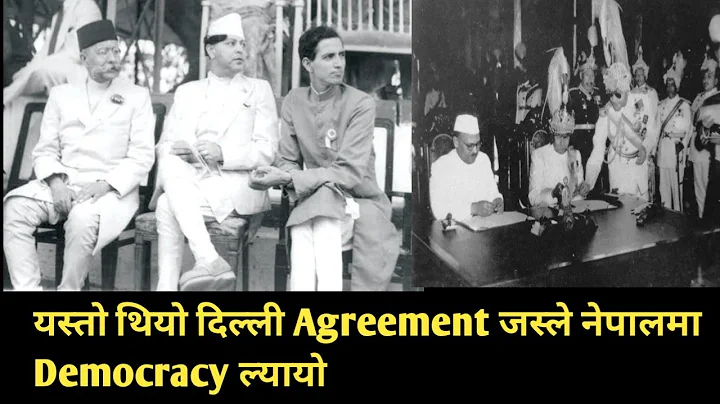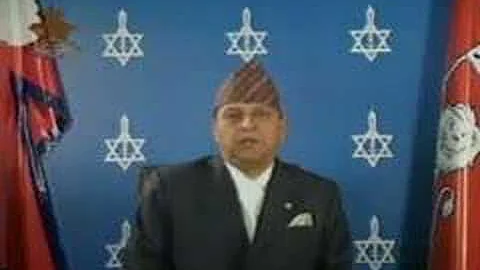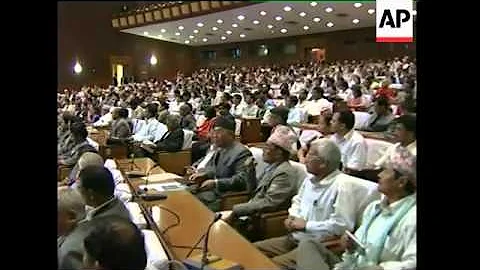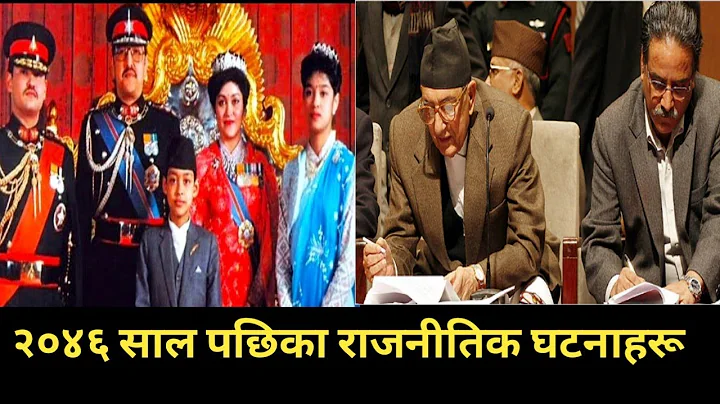Nepal, a country struggling to survive.

On May 28, 2008, an ordinary but earth-shattering event happened in Nepal, which is far away but close at hand. After the Constituent Assembly of Nepal passed the motion to abolish the monarchy proposed by the interim government of Nepal, Nepal And changed the state system to a federal democratic republic. This means that the Shah Dynasty has officially come to an end after 239 years, and the history of Nepal has also opened a new chapter.
In the traditional impression of many people, the reason why Nepal has been impoverished for a long time is not only the natural conditions of the mountainous areas in the country, but also the fundamental reason for the long-standing autocratic monarchy. Therefore, overthrowing the autocratic monarchy and establishing a republican system also means that Nepal will embark on a broad path of common prosperity.
And the world’s youngest democratic republic seems to have more surprises in store. In the presidential election on October 28, 2015, Vice Chairman of the Communist Party of Nepal (United Marxist-Leninist) Bidya Devi Bhandari was elected as the President of Nepal, becoming the first female head of state in Nepal’s history, and becoming the world’s first female head of state. The first female Communist president.
Because Nepal has traditionally been a typical patriarchal society, women were once considered a helpless group in society and excluded second-class citizens. Therefore, Bhandari ascended to the throne of Nepal’s president, improving the status of Nepalese women and promoting social progress. Significant.

In fact, this is indeed the case. After Bhandari was elected, he pushed for the inclusion of clauses such as "women must account for 1/3 of the members of parliament, and at least one of the president or vice president is a woman" into the constitution, which brought dazzling social reforms to Nepal. of dawn.
Looking around the world, it is not uncommon for women to ascend to the throne of power, such as former German Prime Minister Merkel , former South Korean President Park Geun-hye and former Thai Prime Minister Yingluck Shinawatra . But in a country where patriarchy is deeply rooted and Nepal has just entered a democratic republic, the challenges Bhandari faces can be imagined.
However, Bhandari's unique growth experience made it easy for him to govern.
Bhandari was born in a scholarly family in 1961. His maternal grandfather and uncle both held important positions in the local government departments. However, Bhandari's father died young when Bhandari was 9 years old. The young Bhandari had to She took on the responsibility of the eldest sister and took care of her three younger brothers and one younger sister, cultivating her perseverance.
As an adult, Bhandari was not affected by his family's political views of supporting the Nepali Congress Party. Instead, he supported the Nepal Communist Party and got married to Madan Bhandari, a like-minded person.
At that time, the democratic movement in Nepal was surging. The Bhandari couple had been active on many occasions for a long time and accumulated rich experience in political struggle. However, in 1993, her husband died in a bizarre car accident.

Faced with the successive blows of losing his father when he was young and then losing his husband in middle age, Bhandari did not become decadent and give up on himself. Instead, he inherited her husband's legacy and actively participated in politics and shined in the political arena. As the struggle between the Communist Party of Nepal continued to gain momentum and the monarchy declined, Bhandari, whose prestige was growing, became closer and closer to the center of power, and finally ascended to the throne of Nepal's president in 2015.
It can be said that compared to male leaders, Bhandari has the same or even greater abilities. This is the fundamental reason why Bhandari was successfully re-elected in the 2018 presidential election.
And Bhandari's strength goes far beyond "internal political education". She can also handle it well in the international community.
Although Nepal has a land area of only 147,000 square kilometers and a population of just over 30 million in 2020, which is truly not worth mentioning, this does not affect the covetousness of surrounding forces, especially India.
As a country with the title of one of the four ancient civilizations, India has not lived up to its name since ancient times. The Khyber Pass, which is open all year round, is a well-known "printing green channel". For thousands of years, it has been the first choice for conquerors from all walks of life to rush into the South Asian subcontinent to show their dominance. The ancient Indian civilization has also Wave after wave of conquests continued to accumulate, stacking into beautiful and delicious thousand-layer cakes , and attracted the attention of more predators, including England far away in the horizon.

Compared with the conquerors who poured in from the Khyber Pass, the British colonists, as a veritable empire on which the sun never sets, never regarded the South Asian subcontinent as their only one. But because of the submissive spirit of the South Asian people who "do not like armed forces and prefer red makeup", they were born to be model colonies. So after strengthening the caste system created by the Aryans , the British colonists, who were extremely outnumbered, began to call British India their home and began to violently expand their territory. The surrounding Assam , Forces such as Nepal and Afghanistan bear the brunt.
At that time, although Nepal invaded Tibet in 1789 and was beaten back to its prototype by the Qing Dynasty in 1792 and became a vassal state of the Qing Dynasty, it still had strong strength.
However, Nepal was quickly defeated by the powerful British colonists. After encountering a massive invasion of 30,000 British troops in 1814, Nepal, which suffered heavy losses, signed the Treaty of Segori with the British in 1815 and was forced to cede more than one-third of its land.
Because Nepal's heroic resistance left a deep impression on the British, the British army had the "Gorkha Battalion" after the war and has retained the organization to this day.
Britain’s shameless operations to grab land and people from Nepal also aroused turbulent resistance in Nepal. Unable to be disturbed, Britain finally signed a permanent treaty with Nepal in 1923 recognizing Nepal’s independence, and retained a large amount of land in Nepal. privilege.

Although Nepal's independence legally clarified the relationship between Nepal and British India, each side went its own way, but the large number of retained privileges left many hidden dangers and became an important basis for India to boss over Nepal.
After the end of World War II in 1945, Britain, which was severely weakened, was completely beaten back to its original shape, and had to reluctantly give up its colonization of British India. But as a veritable " offshore balancer and mainland China's shit stick", the UK did not want to help others at all, so with the "India-Pakistan Partition" agreement, British India was divided into India and Pakistan dominion .
Because there was no impetus from revolution or war, there was no essential difference in the governance structure between independent India and British India. In other words, apart from the absence of the British colonists' dictates, the people in power in India and British India were the same people.
So what British India pursued at that time was exactly what the founding leaders of India, especially Nehru, longed for, including the plundering of neighboring countries.
Against this background, India and Nepal signed a treaty of peace and friendship in 1950, inheriting all the privileges of British India in Nepal.
Then in 1951, India supported the Nepalese royal family to regain power and implement a constitutional monarchy. India also became the source of turmoil in Nepal.

In 1962, the Nepalese Constitution stipulated that Nepal was a Hindu monarchy, which legally established the relationship between India and Nepal of "one religion, two countries".
But the ensuing Sino-Indian war completely shattered India's tallness and power in the hearts of Nepal.
After independence, the reason why India took action against Nepal was not only the so-called "visible" goal of restoring the territory of British India, but also the consideration of eliminating worries about invading China. Therefore, India required Nepal to hold hands with India and be in a heart-to-heart relationship.
But the problem is that as soon as the war started, the Indian army was quickly defeated, especially the African wildebeest migration formation that the Indian army ran on the Ganges plain, which made Nepal lose all its power to India. respect, and from then on developed an increasingly strong impression of New China.
In fact, as early as October 5, 1961, China and Nepal signed a boundary treaty to determine disputed areas such as Mount Everest , and relations between the two countries began to heat up. After all, the towering Himalayas determine that New China will not have any ill intentions towards Nepal. However, the location connected by mountains and rivers allows China to become a strong backing to help Nepal fight against India.
In 1963, the construction of the China-Nepal Highway started and was successfully opened to traffic in 1967. Then in 1969, Nepal requested that all Indian military advisory groups stationed in Nepal withdraw. They no longer simply followed India's lead.

At that time, after India was beaten to the ground by New China, it quickly healed the scars and forgot about the pain. It pointed the finger at other countries, especially Sikkim , and in 1975, it braved the disapproval of the world. Sikkim was annexed, and the relationship between the fearful Nepal and India became even more blunt.
From a global perspective, Nepal, a landlocked country, and Mongolia, which is also a landlocked country, are highly similar. They are both "sandwich cakes" between the two big countries. If you want to make a difference, you cannot escape from the palms of the two neighboring countries. .
But there are many differences between Nepal and Mongolia: firstly, the towering Himalayas are more blocking than the vast desert, which makes Nepal, whose terrain tilts towards India, be more influenced by India; secondly, compared with after the Cold War China and Russia are united in their "back-to-back embrace". China and India have been tit-for-tat for most of the time. There is no possibility for Nepal not to offend two neighboring countries at the same time. It can only choose one of the two; in the end, compared with restlessness Although Mongolia has actively partnered with countries outside the region such as the United States, Nepal has always been relatively calm. After all, dealing with two neighboring countries is enough of a headache.
But for the United States, which "will go up if there are difficulties, and will go up even if there are no difficulties," Nepal's "pacification" is the best "invitation." Especially after the end of the Cold War, the United States has been struggling to find a suitable reason for war. Therefore, when the royal family tragedy broke out in Nepal in 2001, the United States immediately began to brutally interfere in Nepal's internal affairs in the name of "anti-terrorism."

As a result, Nepal was passively involved in a situation similar to Mongolia. It was struggling to survive under the watchful eyes of the three parties. If it was not careful, it might die without a burial place.
In order to avoid being torn apart by neighboring countries, especially India, which is close at hand, Nepal has become more and more determined to remain neutral. But the problem is that Nepal is weak and does not have the realistic possibility of neutrality. Coupled with the wild ambitions of foreign powers such as the United States, it is simply not feasible for Nepal to stay on its own side.
In such a situation, Nepal must rely on something. When the United States is far away and always loses control at critical moments, and India is close at hand but always wants to "integrate" with Nepal, and arranges sanctions and blockade packages if it is even slightly dissatisfied, Nepal's only choice is to go all the way north.
After all, since the end of the Sino-Indian War in 1962, when New China was "forced" to extend its influence to South Asia, India's aggressive expansion has been increasingly curbed. With Pakistan, Nepal and Bangladesh etc. With the addition of various forces, South Asia finally realized the evolution of "double-sided printing", "3D printing" and then "4K printing".
Under such circumstances, if Nepal wants to avoid being entangled by India, it must get closer to China. In order to counter the pursuit and interception by India after becoming angry, it is imperative to open up the main transportation artery between China and Nepal.

On this point, the royal family and the republican government maintain a high degree of agreement.
In 2003, the China-Nepal highway was expanded on a large scale and its transport capacity was significantly increased. Nepal's dependence on India was further reduced.
After the completion of the entire Qinghai-Tibet Railway in 2006, it immediately extended to Shigatse and other places. Compared with the characteristics of small transportation capacity and much affected by weather, railway transportation not only has large transportation volume but is consistent, and plays a greater role in getting Nepal out of Indian control. Therefore, when the Qinghai-Tibet Railway keeps looking towards the Himalayas, the crossing the Himalayas China-Nepal Railway will gradually increase its schedule.
In 2019, at the "Belt and Road" Summit Forum, the 170-kilometer-long China-Nepal railway project from Geelong to Kathmandu was listed as a priority. This means that Nepal can not only get rid of India's control, but also be able to catch up with the "Belt and Road" Express train of initiative.
But the problem is that it is not difficult for Nepal to choose between China and India. After all, although India has a loud voice, it cannot hide its strength. In 2020, Nepal can forcefully regain the 355 square kilometers of disputed land occupied by India. explain the problem.
Nepal’s biggest struggle is the pervasive infiltration of the United States, which is also the biggest crisis facing Bhandari.

In September 2017, Nepal’s former Congress Party government signed the “Millennium Challenge Corporation Agreement”, referred to as the MCC Agreement, with the then US Deputy Secretary of State John Sullivan in Washington.
According to the content of the MCC agreement, the United States will support Nepal in building about 300 kilometers of 400 kV transmission lines, as well as three substations , etc.
Although it seems to be a harmless economic aid, it contains the sinister consideration of the United States to seize Nepal's extraterritorial rights and establish a position in Nepal to threaten China and India. The Millennium Challenge Company that implements the MCC agreement has also become a A powerful tool for American hegemony .
So when the Bhandari government signed the MCC agreement, the United States was impatient to demand the implementation of the project. Although Nepal repeatedly delayed, the parliament finally agreed to it under tremendous pressure from the United States.
For Nepal, this has opened a Pandora’s box of horror. You must know that this paper agreement may not necessarily be favored by the United States. After all, US$500 million is just a matter of overtime for the money printing machine for the United States, but it will definitely offend China and India. Although the United States requires India to agree when promoting the MCC agreement, India will definitely be furious at the United States' behavior of entering its backyard and fanning the flames.

Although as the so-called "model of democracy" and "pioneer of freedom" in the United States, India and the United States have always been in collusion and are half-brothers. However, the so-called brothers have clearly settled their accounts. In the face of the "Indian Dream" that India cherishes, in the face of the "Indian Dream" that India cherishes, There is no doubt that the United States, which is exploiting every opportunity in Nepal, is a sworn enemy.
Therefore, the United States' interference not only disgusts India, but also provokes China. If the Bhandari government wants to achieve Nepal's independence, it must make the right choice.
For Nepal, China’s national rejuvenation is not only making rapid progress, but also increasingly countering the power of the United States and India. It has never had any ill intentions towards Nepal and generously supports Nepal based on the purpose of good neighborliness and friendship. This is what Nepal deserves. A trusted neighbor and partner.
Facts have proved that the Bhandari government's choice finally reaped extremely considerable dividends. In addition to the economic and trade agreement signed between China and Nepal in 2018, Nepal can use China's 4 seaports and 3 land ports for international trade. During the new crown epidemic When outbreaks occur or when India launches an attack, China is always able to provide help in times of need and becomes Nepal's strong backing.
I hope that as China’s strength further increases, Nepal will finally expel the US forces on the basis of resolute counterattack against India, truly achieve self-reliance on the basis of neutrality, and achieve a brighter future than Mongolia.

has many omissions, please correct me.
I am Jing Yeshi, looking forward to your attention.





















